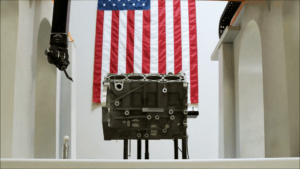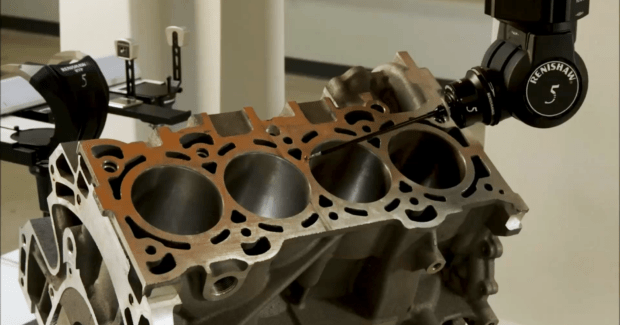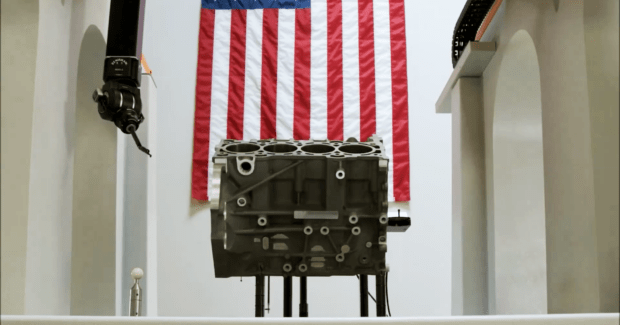Five-Axis CMMs Streamline and Automate Parts Inspection and Measurement
Labor shortages, automation, and need for nimble parts inspection drive adoption of CMMs.
Posted: January 24, 2024

Well-documented data and information management is more important than ever. From part quality to inventory locations, job shops and manufacturers need progressive tools to help them navigate rapid changes in a digital landscape. Rising demand in markets such as machinery manufacturing, transportation, electronics and aerospace in particular, are prompting companies to adopt 5-axis coordinate measuring machines (CMMs) to streamline and automate parts inspection and measurement.
New industry standards, such as ISO and ASME, dictate the need for 5-axis inspection paired with model-based definition (MBD) software. With 5-axis scanning capabilities, manufacturers can obtain large quantities of highly accurate data at ultra-high speeds.
Recent market reports support the uptick in adoption rates for CMMs and expect the market to grow by $6.58 billion by the end of 2030 with a CAGR of 7.6%. With ongoing labor shortages pushing automation and artificial intelligence, 5-axis CMM technology can help minimize the risk of errors while boosting accuracy and speed in complex parts production.
Robots are already using AI-backed sensors to evaluate real-time data and adjust sheet metal manufacturing parameters on the fly. Cobots work alongside their human counterparts to perform repetitive tasks. Quality control measures such as defect analysis for early detection of part defects and deviations are also finding their way into automated production cells.
“With the steady growth of AI-backed automation that can make informed decisions during part processing, 5-axis coordinate measuring machines are really the future of part measurement and inspection,” said Thomas Ayers, sales and business development director for AIMS Metrology. “The more complex the parts, the nimbler the inspection system needs to be. Take 3D printing for example. Prototyping is still the primary application for additive manufacturing, but according to recent reports, the market for 3D printed end-use parts is growing at 17%. Since the parts are not manufactured in a conventional process, you need the flexibility of 5-axis CMM technology to measure and inspect these components. Unlike a conventional indexable probe which is limited in scope, a 5-axis probe head provides infinite positioning.”
Reshoring and near shoring activities also continue to expand, making automation standard for both fabricators and small to medium-sized job shops. Pairing a 5-axis CMM with an automated stamping or bending cell gives a fabricator the ability to adapt to the next job that comes through the door. “Companies have to be able to move from Part A to B to C,” Ayers says. “Automation has become easier for smaller job shops to obtain, but most of them still don’t have the resources to build out a logic path for a manufacturing cell. In addition to helping to integrate, program and calibrate the machine, we can completely rebuild and retrofit a 5-axis CMM and put it into the hands of a five or 10-man shop at a very cost-efficient price point.
“Conventional gauges have been on shop floors for years, but they are fixed and as a result, limited,” he continued. “As a country, we’ve become very customized. Flexibility is key for optimal parts production in this kind of environment. We’re building and integrating an automated 5-axis CMM application right now that can run six different parts.”
By partnering with robot providers, AIMS is dedicating resources to develop turnkey automated 5-axis CMM packages that can integrate with a company’s ERP and MRP networks as well. “Automation companies aren’t machine tool or metrology experts so partnering is equally advantageous for them,” Ayers said.
AIMS’ Revolution Series CMMs — the LM, HB and Summit 10.10.10 — provide versatile three-dimensional inspection of small to large in-process and post-process parts in an automated cell. The OEM is also able to tailor its CMMs to customers’ software requirements with systems like [Renishaw’s] Modus, CMM-Manager and Verisurf’s CAD-based modular software.
















